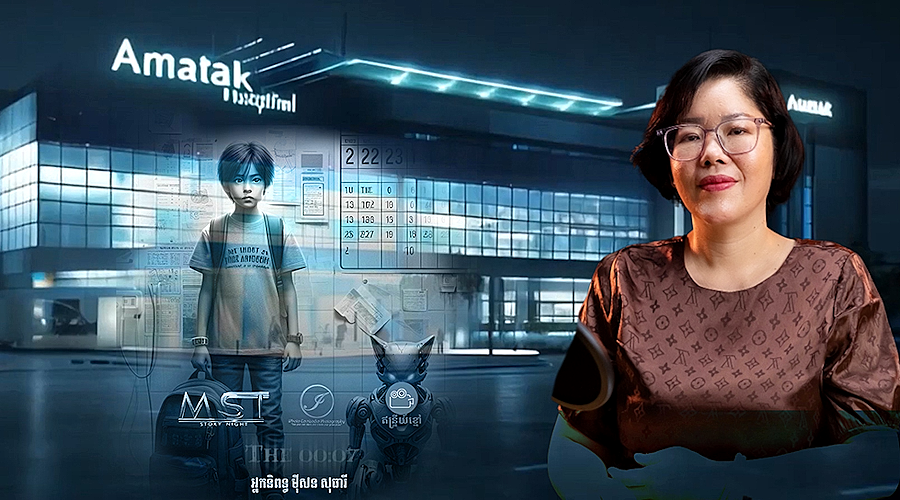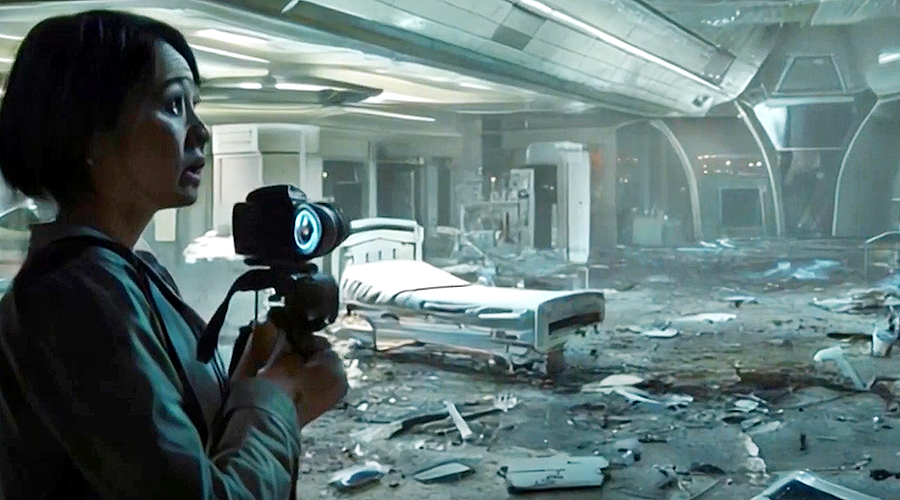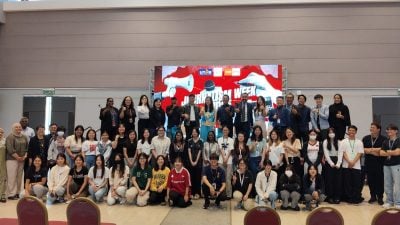
This November, Cambodian author Meysan Sotheary will release her ground-breaking new project: a video podcast titled The 00:07, which blends AI with her distinctive story-telling approach.
Known for her fiction and nonfiction works that explore societal issues, Sotheary is now embracing technology, transforming her vision into a dynamic, futuristic narrative that takes her audiences into the year 2028.
Her upcoming podcast is set to revolutionise how stories are told in Cambodia.
In a trailer for the podcast, she teases an intriguing premise: “At 00:07, a major event occurred… Bang!!!… A mystery within the top level of Amatak Hospital… the year 2028… unveiling a terrifying incident… that no one could have anticipated.”
The story, which will be released as a podcast, promises a thrilling combination of suspense, science fiction and horror, all enhanced through the use of AI-driven audio-visual elements.
A new approach to story-telling
Initially, Sotheary planned to write The 00:07 as a traditional novel, a dream she’s held since 2021.
However, due to the demands of a busy career, the project took a new direction.
Now, with the rise of AI and her growing interest in exploring its potential, she has shifted the format into an innovative story-telling podcast with plans to develop an audio-visual (AV) version in 2028.
“My initial idea was to write a typical zombie story, completely unrelated to technology,” Sotheary said in a recent interview.
“But now, I’ve turned it into a technology-driven narrative. The story is still about survival and danger, but I wanted to give it a fresh twist by incorporating technology – both in the story and in how it’s delivered to the audience.”
This bold approach highlights how AI is revolutionising content creation, allowing writers like Sotheary to break free from traditional formats and experiment with new ways of engaging their audience.
She explained that AI technology, particularly in the audio-visual sector, offers a cost-effective way to enhance the story-telling experience, bringing futuristic scenes – such as robot physicians and a high-tech hospital – to life in ways that resonate with today’s audiences.
The story centres around a viral outbreak in the Amatak Hospital’s Senior Centre in 2028.
The protagonist is a 12-year-old robotics expert named Vuth, who, along with his team, must navigate the deadly outbreak.
The virus spreads through the hospital, infecting patients and turning them into zombies, and Vuth’s only defence is the advanced robots he created from everyday gadgets like a tablet, phone and pen.
AI and audio-visual story-telling
Sotheary’s integration of AI into her story-telling is a reflection of modern trends in content creation.
“AI-driven audio-visual story-telling helps audiences better understand the plot,” she shared, explaining that her futuristic scenes stand in stark contrast to the medical facilities we know today.
By leveraging AI, she’s able to bring this vision to life, even though she acknowledges that it’s not a perfect tool.
While AI may not yet meet all her expectations in terms of fully personalised imagery, it plays a significant role in enhancing the audience’s experience, giving them a glimpse into a possible future where technology has taken centre stage.
“AI can generate scenes that make the story more vivid for the audience, allowing them to imagine with greater depth,” she added.
In the story, Vuth’s robots play a key role in protecting his team from the hospital’s zombie outbreak.
One of the robots, a cat, transforms from a tablet; another, an iron sparrow, emerges from his mobile phone; and the third, a pen, becomes an essential tool for their survival.
Unlike traditional zombies, the creatures in the story are blind, but their olfactory and auditory senses are amplified a thousandfold, making survival even more challenging for the protagonists.
These robots have the ability to eliminate odours and sounds, preventing zombies from detecting them.
However, when the robots are destroyed halfway through the story, Vuth and his team are left in a state of desperation, heightening the tension and drama.

A new story-telling model
In the digital age, creators are increasingly turning to new technologies like AI to push the boundaries of traditional story-telling.
For Sotheary, this project represents a major shift in how she approaches her craft.
“I’m daring myself to try something new,” she explained.
“If I can tell a story well, then I’m happy to share it with the audience in whatever format works best.”
Sotheary’s willingness to explore new story-telling models is not surprising given her long career in the media and literary world.
She is best known for her work as an author, having written both fiction and nonfiction that delves into the social and economic challenges faced by Cambodian women, youth and migrant workers.
Her short story My Sister, for example, tells the tale of a young woman who becomes a bar girl in the city to support her family, reflecting the broader effects of migration and economic hardship in Cambodia.
In addition to her fiction, Sotheary has written Tumroam Klay Chea Neak Nipunth (Before Becoming a Writer), a guide for aspiring Khmer authors.
Through the book, she encourages young writers to pursue their dreams, emphasising that story-telling is not solely about writing talent.
Some people are natural storytellers, she says, even if they are not traditional writers, and they too should be seen as creators.
The future of AI in story-telling
Despite her success, Sotheary is far from resting on her laurels. She sees AI as a key tool for the future, particularly in audio-visual production.
While she acknowledges that producing effective content still requires a combination of sound and visuals, she believes that AI has the potential to transform the way stories are told.
“In the 4.0 era of AI technology, if people don’t harness AI, they risk being controlled by it,” she remarked.
“We need to do our best to use this technology to our advantage.”
As she prepares to release The 00:07 in podcast format this November, Sotheary remains focused on the future.
In addition to this project, she has several other stories in development, including narratives set in ancient times and romantic tales she describes as extraordinary.
One such story involves the Funan warlords, and like The 00:07, it will be produced with the help of AI.
Sotheary also shared that some of her fans have requested more philosophical content from her, but due to her busy schedule in the media, she has opted to prioritise entertaining narratives over personal success stories or deep philosophical discussions.
Nonetheless, her works often carry philosophical undertones, as evidenced by her decision to cast a 12-year-old protagonist in the story.
“I chose Vuth as the protagonist because I wanted to show that children will play an increasingly important role in the future, particularly in the tech sector,” she explained.
“Philosophy doesn’t discriminate by age. In the digital era, we need more young people involved because they are naturally skilled at using technology.”
As Sotheary continues to push the boundaries of story-telling in Cambodia, her latest project is a clear indication that AI will play a major role in shaping the future of narrative creation.
ADVERTISEMENT
ADVERTISEMENT








































